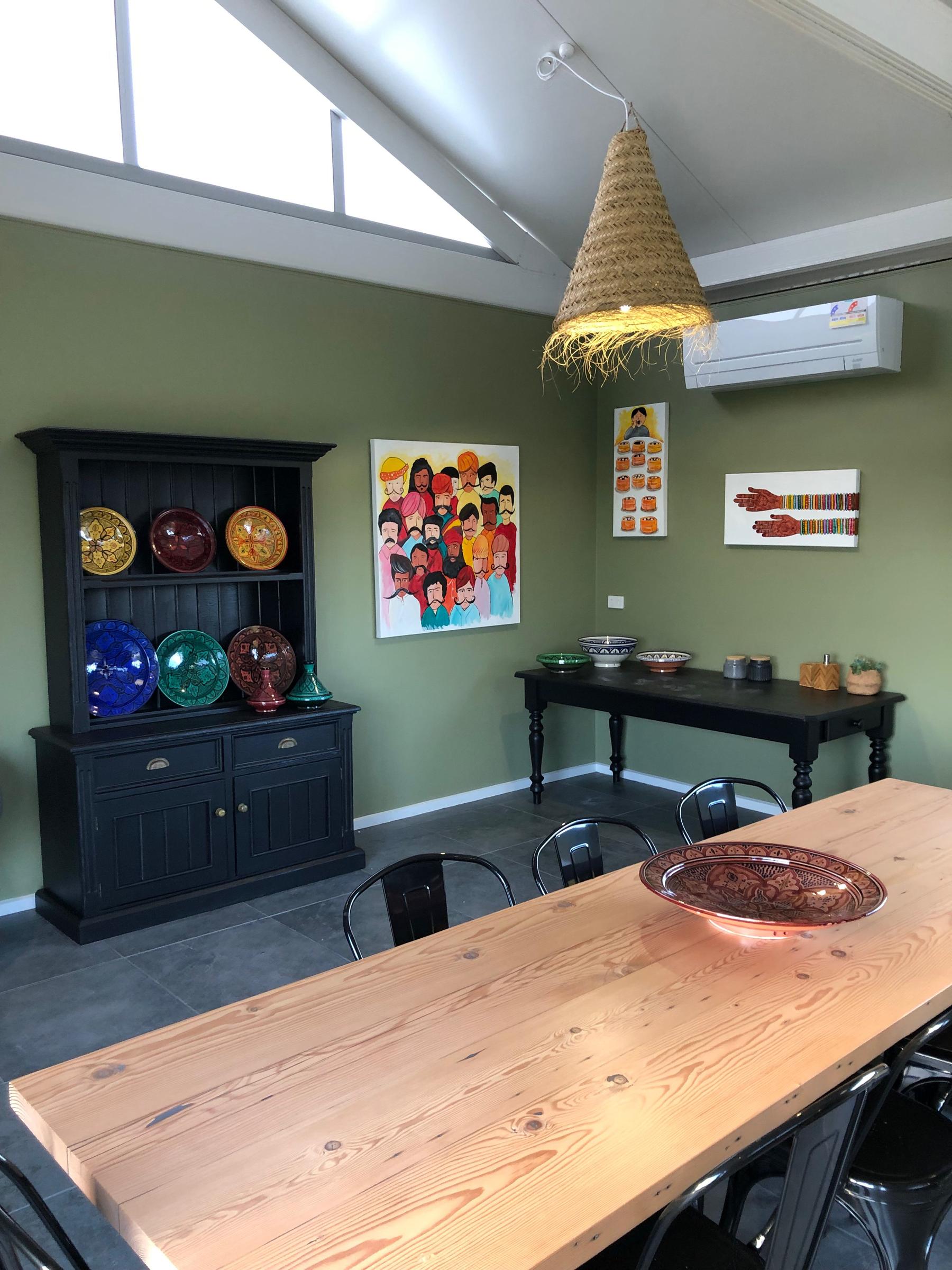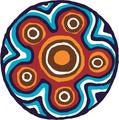Specialists Term Overview

In Visual Art this term:
Years 2 and 4 will be considering the driving question, Where will our curiosity as artists lead us as we explore 3D artworks? They will:
KNOW: • how to look closely at artworks and present a range of interpretations (personal opinions) of the subject matter and themes based on their ideas, experiences, observations and/or imagination
• how to actively engage in discussing why artworks are made, by whom and for what purposes, for example, Who made the artwork? Where is the artwork from and why was it made? Where and how are artworks displayed?
• key vocab: 3D Art Form - Sculpture Art elements - shape, space (negative & positive) Art Principles - scale (big & small)
DO: • explore the use of visual conventions in artworks, for example, what colours were used, and how, why is the colour it used in this way and express these conventions in their own artworks, including artworks by Aboriginal and Torres Strait Islander peoples
• use and experiment with a range of techniques and processes to demonstrate various compositional effects based on their intentions and choice of subject matter
• identify and follow technical processes and safe practices in relation to specific art processes to make artworks, using construction techniques in sculpture
• share ideas with their classmates about the expressive choices they made in their artwork
and
BE: •curious, creative and critical thinkers and makers
•engaged and motivated as both artists and audience
In Visual Art this term:Year 3/5/6
In STEM this term, students will be investigating the driving question, ‘How will we use our superpower of curious and creative thinking to design solutions that care for our world?’
They will:
KNOW: • how to identify needs or opportunities for designing
• understand technologies and design sequence needed to realise designed solutions
• consider the importance of designing for sustainability
DO: • explore opportunities (around the school, in the classroom, at home) for designing caring solutions
• identify, gather, play and sort with materials, components, tools and equipment
• generate personal design ideas, exploring opportunities, identify, suggest changes, discuss, ask (research)
• test and demonstrate safe use of tools, equipment, components and techniques, identify and name properties and features, materials
• problem solve through practice of trial & error, sequence steps to design solutions
• reflect on success (including environmental sustainable outcomes) and and suggest improvement
and BE: •curious, creative and critical thinkers
•empathetic & resilient designers that care for our world and each other
In Kitchen Garden this term:
Grade 1 and 2 students will be learning about themselves and others as they investigate and explore kitchen garden.
They will:
KNOW:
- life cycle of plants and needs of all stages
- plants grow in different climates and seasons
- importance of biodiversity in the garden including plants and insects
DO:
- treat each other respectfully
- use gardening tools safely at all times
- recognise plants, insects, and birds as living things and treat them accordingly
- engage in maintenance tasks including weeding, watering, mulching
and BE:
- willing to take risks with learning
- collaborative learners, sharing knowledge with one another
- active gardeners at home
In Performing Arts (Year 2 Dance) this term:
Students will be exploring the driving question of
“How do we prepare for a digital dance performance?”
By the end of the term it is hoped that students will:
KNOW
* how to use the dance elements of time and energy in dance performances.
DO
* work as a team to create a dance from around the world, and video it for the end of year concert.
BE
* creative, co-operative, enthusiastic and use a growth mindset.
(Alison)
PREP AND YEAR ONE
In Performing Arts (Dance) this term:
Prep and Year One students will be exploring the driving question of
“How do we prepare for a digital performance?”
By the end of the term it is hoped that students will::
KNOW
* how to prepare the body for dance
* how to prepare a space ready for dance
* how to follow simple choreography
* how to use simple dance vocabulary
* how to prepare for a performance
DO
* work as a team to create a dance from around the world, and video it for the end of year concert.
BE:
* brave, focused, willing to try new things, use growth mindset, enthusiastic and co-operative.
YEAR THREE AND FOUR
In Performing Arts (Dance) this term:
Year Three and Four students will be exploring the driving question of
“How do we prepare for a digital performance?”
By the end of the term it is hoped that students will::
KNOW
* how to prepare for the body dance
* how to prepare a space ready for dance
* how to follow increasingly complex choreography and contribute ideas where possible
* to use increasingly complex dance vocabulary
* how to prepare for a performance
DO
* work as a team to create a dance from around the world, and video it for the end of year concert.
BE:
* brave, focused, willing to try new things, use growth mindset, enthusiastic and co-operative.
YEAR FIVE AND SIX
In Performing Arts (Drama) this term:
Year Five and Six students will be exploring the driving question of
“How do we prepare for a digital performance?”
By the end of the term it is hoped that students will:
KNOW
* key drama vocabulary
* the elements of drama such as character, movement, space and time
* how to read and write a script or improvise a short scene
* how to prepare for a performance
DO
Write/improvise a short dramatic piece and video it for the end of year concert.
BE:
* creative, enthusiastic, joyful, co-operative, use growth mindset, inquisitive and brave.
In PE this term:
Years Prep/1/2 will be focusing on dance, one handed strike and two handed strike with the driving question: how does movement help our health and wellbeing?
Know
Dance is a fun way to exercise that can be used to help health and wellbeing. Dance can be learned patterns of movement that you can do together with other people. Dance can change your heart rate and make your body healthier. I can try different ways to strike a ball and decide for myself which one I like best for a game. Following rules makes participating with others feel more safe and is more enjoyable.
Do
Follow patterns of a dance. Create patterns to make a dance. Follow rules when participating with others. Hit a two handed forehand strike. Hit a one handed forehand strike. Play games using fundamental movement skills.
Be
Be active and understand regular physical movement can help my body and my brain. Be aware of my body movements in relation to space and objects. Be safe with movement, equipment and be aware how my actions can affect others.
Years 3-6 will be working on an Inquiry project with the driving question: how does movement help our health and wellbeing? Students will also learn about teamwork through learning the game of cricket.
Know
Setting a personal physical activity goal that I enjoy doing can help my health, fitness and mental wellbeing. I can use physical activity as a coping strategy in times of stress. Participating in team sports with a positive mindset and regulating my emotions helps my team and makes it more enjoyable for everyone. I can try my best to use strategies to help my team.
Do
I can set a physical activity goal for myself. I can take steps towards achieving my goal by participating in regular physical activity. I can reflect on my successes and setbacks. I can participate and positively contribute in team sport. I can demonstrate how to bowl a ball towards a target. I can demonstrate how to use strategy to hit a ball away from other people. I can play fairly and safely by the rules. I can encourage and include others in physical activity.
Be
Be actively particpating in enjoyable physical activity. Be positive towards their own efforts and the efforts of others. Be willing to give new skills a try and decide techniques that they feel comfortable doing. Be able to reflect on their successes, setbacks and emotions in regards to individual and team activities.
